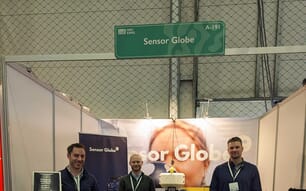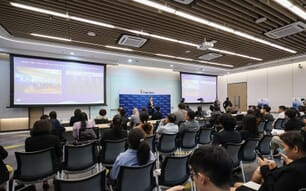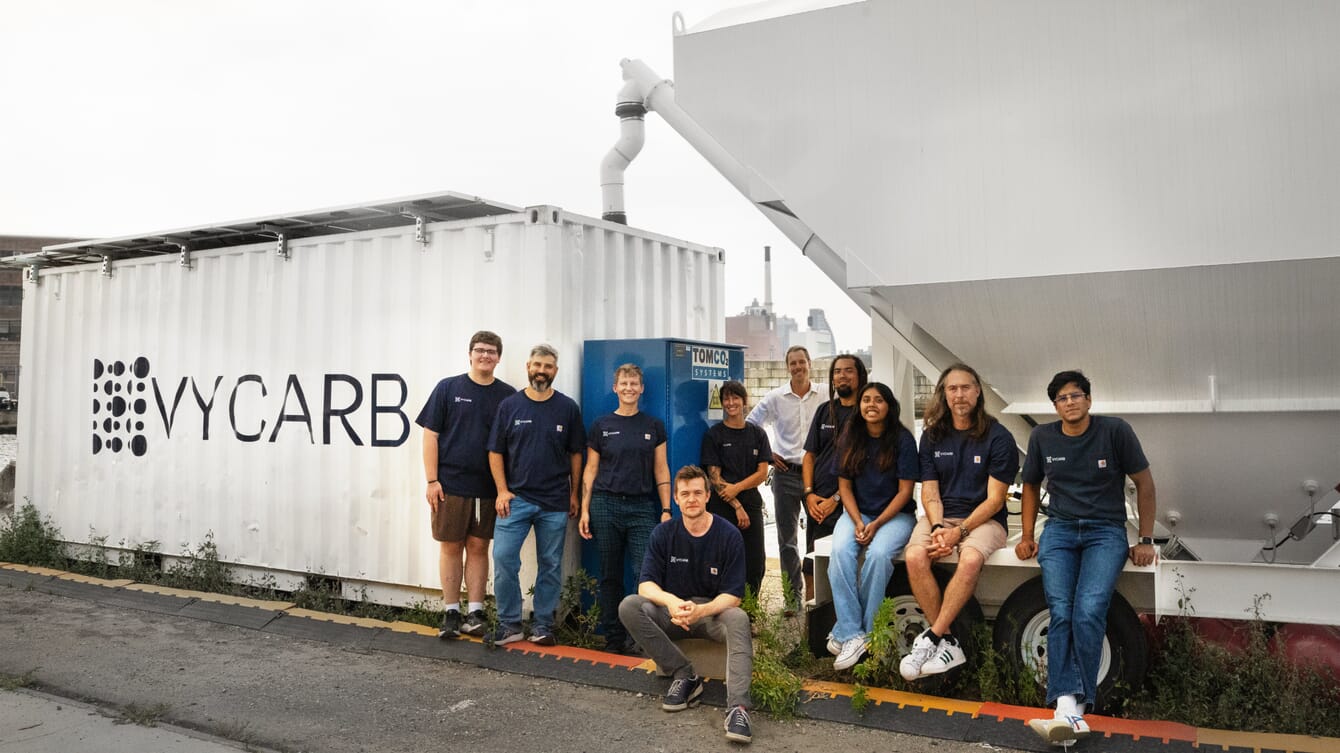
© Vycarb
For decades, carbon dioxide removal was something that was only required in confined spaces – like mines, submarines and spacecraft. But, as climate change accelerated in the late 20th century, scientists began investigating the possibility of removing this greenhouse gas directly from the air and permanently storing it.
Garrett Boudinot, founder of Vycarb, is one of those scientists. While completing a PhD on methods for tracing carbon changes in the ocean, he had what he calls “an existential crisis”.
“I've spent most of my life studying the problem of climate change. I don't need to be convinced about the severity of the problem anymore – what are the solutions?” he recalls.
That question led him to Cornell University, where he started a research programme exploring ways to accelerate natural carbon cycle processes in soils and waters. As he reviewed trial data from the emerging carbon removal market, the results, he says, “were all over the place”. Measuring how carbon moves through dynamic, heterogeneous sinks was proving incredibly difficult.
Boudinot identified the problem as an opportunity, and in 2022 contacted the Activate Fellowship, run by New York State and the US Department of Energy, which had started to focus on carbon management that year.
“I applied with a new idea for a way to measure and control a permanent form of carbon storage using natural water… The fellowship I received is really what allowed me to start the company,” says Boudinot.
That idea now underpins Vycarb’s* system: modular reactors accelerate CO2 storage in water and convert it to bicarbonate, with real-time sensors monitoring baseline and resulting carbon chemistry. By tracking CO2 input and reaction rates, the system self-calibrates to ensure that the released water is safe and the carbon remains permanently stored, even as input and natural conditions change. Bicarbonate is the form carbon dioxide naturally taxes once stored in the ocean, making Vycarb’s system a way to simply accelerate what the ocean already does safely and controllably for industrial applications.
Since then, Vycarb has grown to a 10-person team, won support from the US Department of Energy, and attracted early investment from Rio Tinto, BlueScope and Oslo-based Katapult Ocean. With three proven pilots, interest from major global players is growing and Vycarb is preparing itself for an ambitious next phase – details of which are due to be announced soon, according to Boudinot.
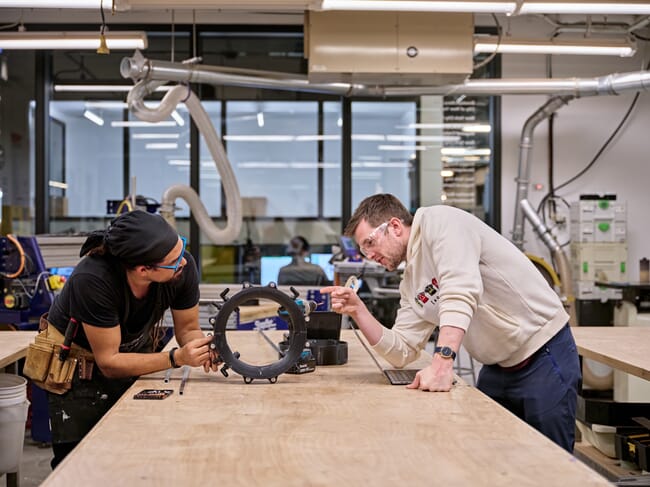
© Vycarb
Understanding marine carbon capture and storage
Carbon capture and storage (CCS) is usually grouped into two main approaches:
- Geologic storage; where CO2 is captured from industrial sources, purified and injected deep underground, often in depleted oil and gas wells.
- Ocean-based capture; which uses the planet’s largest carbon sink – the ocean, which holds 71 percent of all carbon on earth – to store CO2 through its natural chemistry and carbon cycle.
Once CO2 dissolves into the water, it can take several stable forms – approximately 99 percent bicarbonate and carbonate ions and approximately 1 percent carbonic acid – that can remain in the ocean thousands of years.
“The ocean is the largest carbon sink on the surface of the planet. There's over 30 trillion tonnes of bicarbonate in the ocean. Our technology does that same chemical process, but just accelerates it and controls it,” says Boudinot.
Vycarb’s system, built into modular pipe reactors, draws in CO2 from various sources and reacts it with water and naturally occurring minerals like calcium and magnesium. This converts the gas and carbonic acid into bicarbonate, a stable and alkaline form of carbon that stays dissolved in seawater for around 100,000 years. The treated water is then released back into the ocean.
What sets Vycarb apart is the real-time sensing technology that formed the basis of Boudinot’s original fellowship proposal.
“Our sensing technology allows us to quantify [carbon] inside of our reactor and monitor exactly what the conversion is to ensure that the waters leaving our system are safe for release back into natural waters,” says Boudinot.
Why deep geologic storage is not ideal
One major limitation of geologic storage – beyond the challenge of finding suitable sites – is that the CO2 must be of high purity, and purification demands significant energy.
“If you're not near the right sub-surface geology to inject the CO2, you've got to build massive pipeline infrastructure to get that CO2 to where you can store it. All of that requires the CO2 to be a really high purity. The problem is most CO2 emissions are not high purity,” says Boudinot.
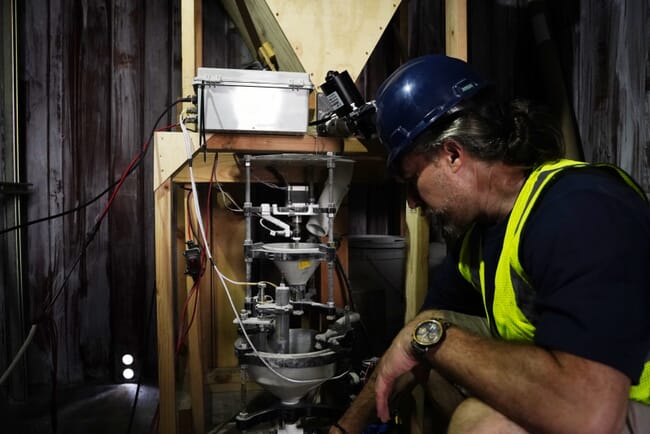
© Vycarb
Leakage risk is another concern, requiring constant monitoring. Combined with the infrastructure and purification costs, expenses can quickly escalate.
Vycarb’s technology is both more economical and avoids these issues by having the ability to accept low-purity CO2 directly, eliminating the need for energy-intensive concentration.
“We can also use any natural water – rivers, bays, oceans – as the medium for permanently storing that CO2. And because that reaction happens within our system until completion, the risk of leakage is much less,” details Boudinot.
The main ongoing requirement is adding calcium and magnesium, but these elements can be widely sourced, and their proximity to future sites can be factored in to choosing the best sources.
Pilot testing and results
So far, Vycarb has run three successful pilot facilities, each increasing in scale to carefully validate the technology and confirm there are no negative impacts at each step.
The first pilot launched in March 2023 in partnership with the East Hampton Shellfish Hatchery on Long Island. Working at a tiny scale, capturing only milligrams of carbon per year, the aim was to test safety and demonstrate the measurement capabilities. No adverse effects were detected and the measurements were successful, so the team moved on to a larger pilot on Governor’s Island in New York Harbor.
“They've initiated a climate solutions innovation hub there. We were one of the first companies to pilot in that hub and were there for over a year. It was pretty small scale [kilograms] but allowed us to generate incredible data showing that across variable water chemistry through over a year, our process was able to self-calibrate,” explains Boudinot.
Over the past nine months, Vycarb has been running its largest pilot yet in Brooklyn, processing tonnes of CO2. This has allowed further testing of different reaction rates, mineral sources, and CO2 concentrations – all against the backdrop of the New York City skyline.
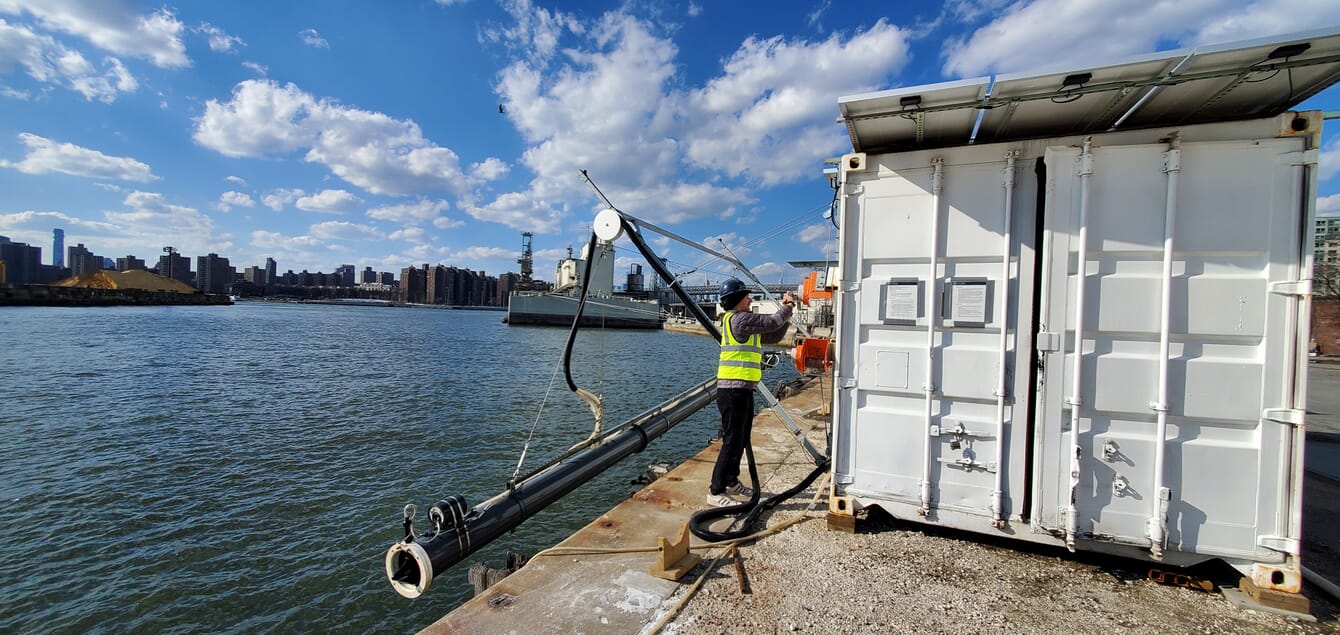
© Vycarb
Plans for the future in a climate-sceptic environment
In the short term, Vycarb is continuing to validate its technology while scaling up operations, and gathering robust environmental and cost data. This also allows it to fine-tune settings for the specific exhaust characteristics of target industries such as direct air capture, oil and gas, bioenergy, cement and steel.
“We're continuing to test and optimise that CO2 injection using different purities of CO2 at our pilot site to demonstrate final costs and energy requirements. We’re also working with other parties to do further ecosystem assessments again to show independently that this technology is safe and the carbon is permanently stored,” says Boudinot.
The company is now seeking partnerships with industrial facilities where the system can be integrated to capture emissions at source. While all its pilot plants have been located in the US, given the strong decarbonisation incentives globally, Vycarb is now exploring international opportunities – which have been the aim since starting. Water bodies and greenhouse gas emissions are not limited by borders.
“A lot of the focus is international. We really see Europe as an ideal geography for this given the existing ETS [emissions trading system] and are going to be doing a lot more to accelerate development in that area. Norway is one of the leaders in carbon capture and storage. Because of the water availability, because of the CO2, we really see Norway as an ideal location for a next project opportunity,” notes Boudinot, who will be visiting the Nordic country in September.
*Vycarb is one of Hatch Blue’s portfolio companies, but The Fish Site retains editorial independence.



